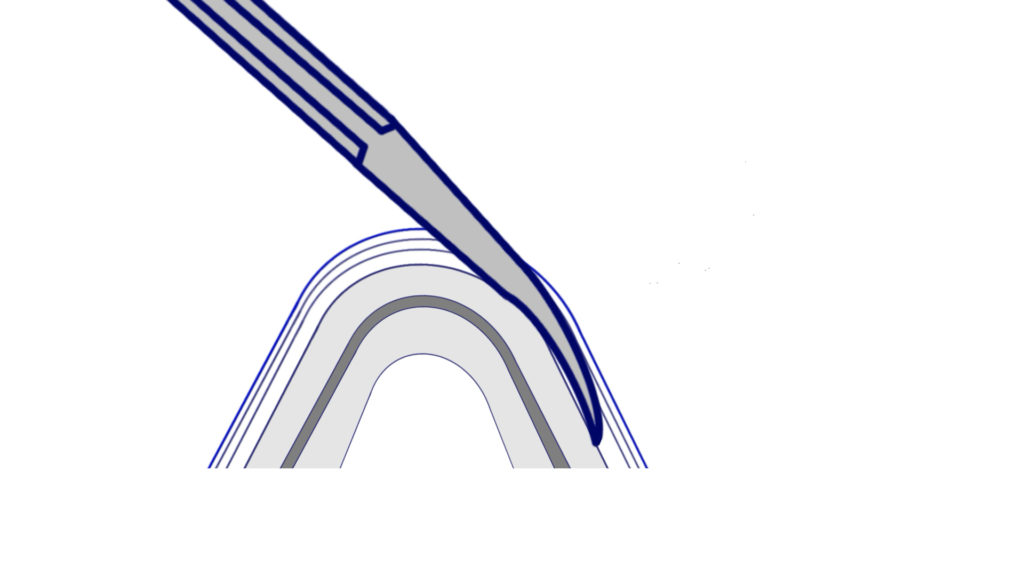After proper application of the ring forceps, the next important step of delivering the vas is the puncture. The goal is the make a tiny opening in the skin and fascia so that the vas will easily slide out. The first puncture makes all the difference. The key here is use a single tine of the Li dissecting forceps to enter the skin just slightly before the apex of the vas, to pierce downwards through the fascia, and to actually puncture the anterior wall of the vas and enter the lumen. By piercing down to the lumen, you insure that you have gone through the fascia and also made a small opening in the vas that you will use as a handle later on.
Once you feel the single tine of the dissecting forceps in the lumen, withdraw and immediately follow the path with both tines of the closed Li forceps. With the closed forceps, you should advance almost as far as with the single tine. You want to go far enough to penetrate all fascial layers and make an opening in the vas, but not far enough to split the vas lengthwise as you spread the fascial layers.
The forceps start to pierce the skin just before the apex of the vas.
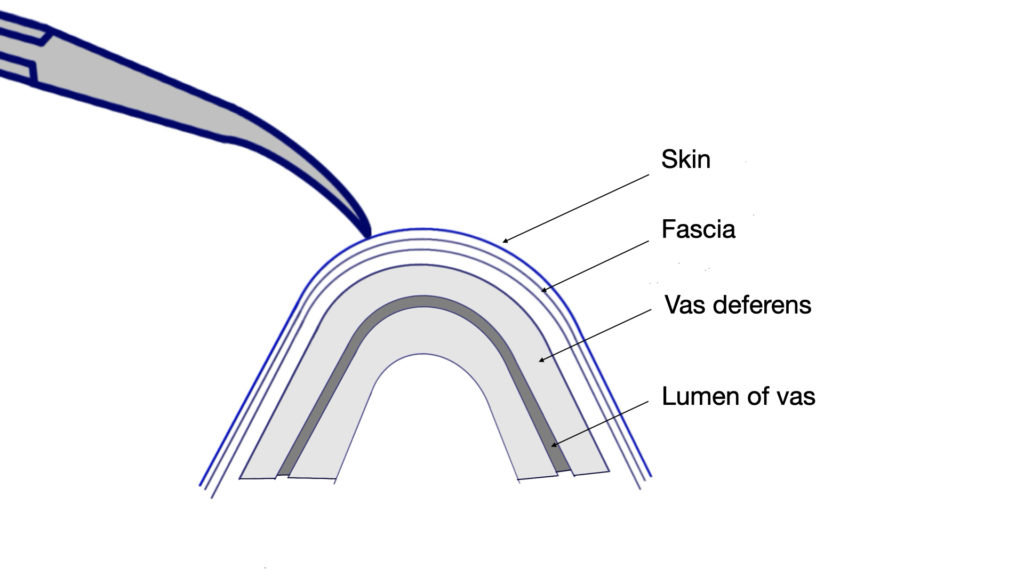
The tip of the forceps continues through the skin and fascia, right up to the vas deferens.
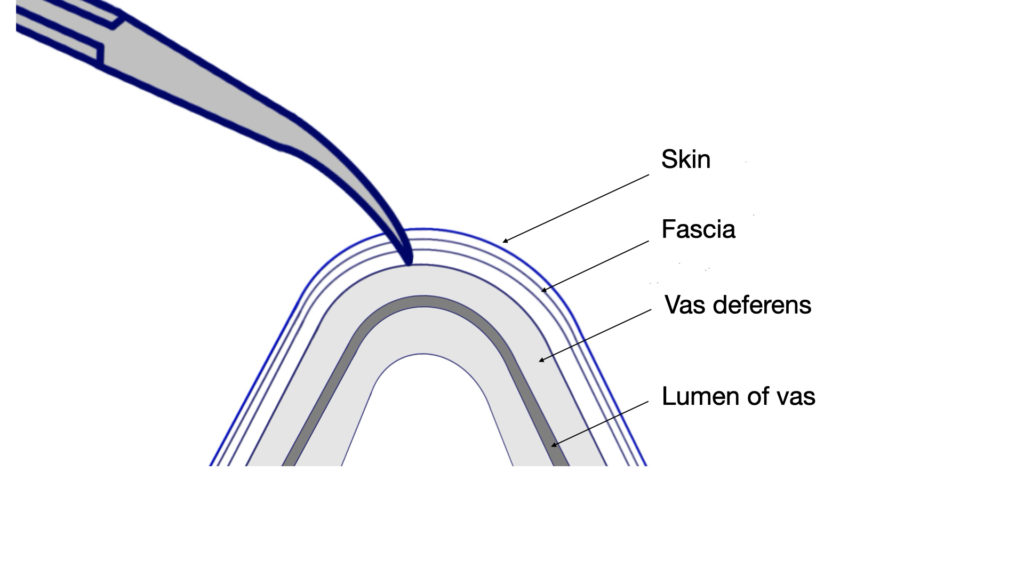
With a gentle downwards and cephalad pressure, continue into the vas until you feel the forceps enter the lumen of the vas. This is a subtle sensation and sometimes you even feel a tiny “pop” sensation as the forceps enters the lumen. Keep in mind that the average diameter of a human vas is just under 3mm, so once you enter the muscular wall of the vas, you want to proceed just under 1.5mm. If you don’t go far enough, you won’t have pierced enough fascia and the delivery of the vas will be more difficult. If you go too far, you will transect the vas and cause more problems with hemostasis.
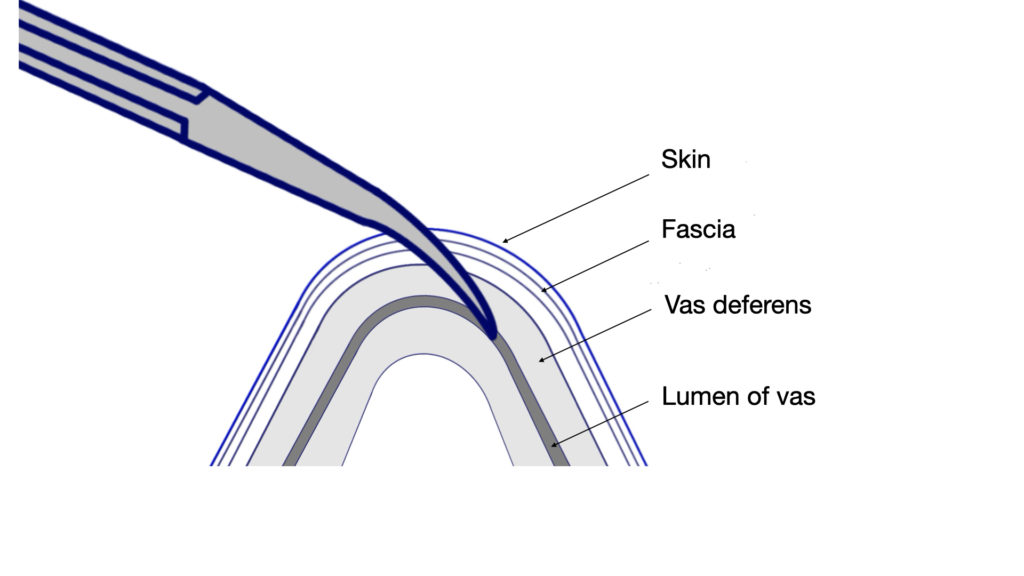
Common Errors
If you don’t go deep enough, you will be above the vas. You will pierce the fascia just under skin, but you won’t pierce the very fine layer of fascia that tightly surrounds the vas. The subsequent delivery of the vas will be much more difficult.
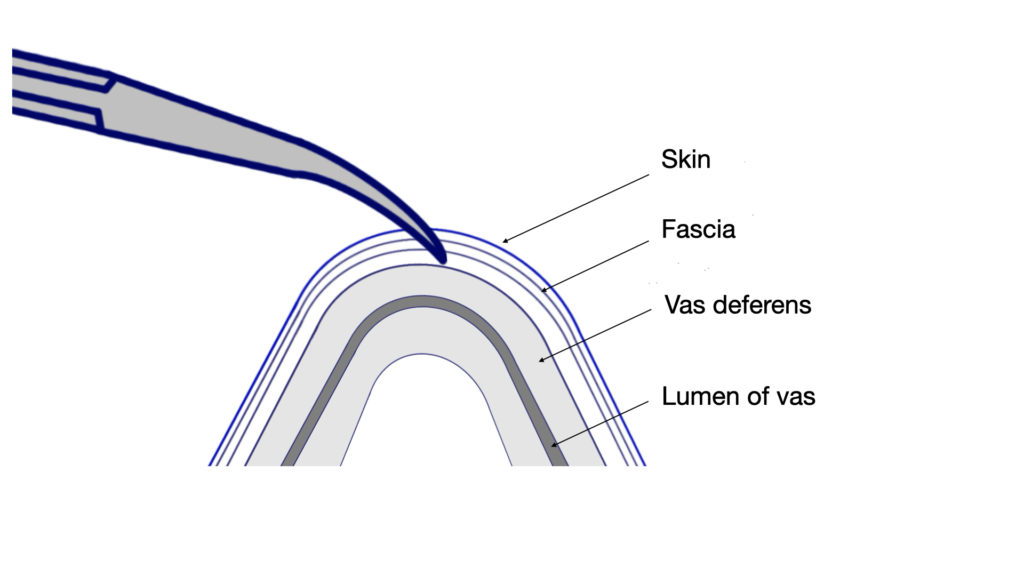
If you pierce too far dorsally (too deeply), you will transect the vas.
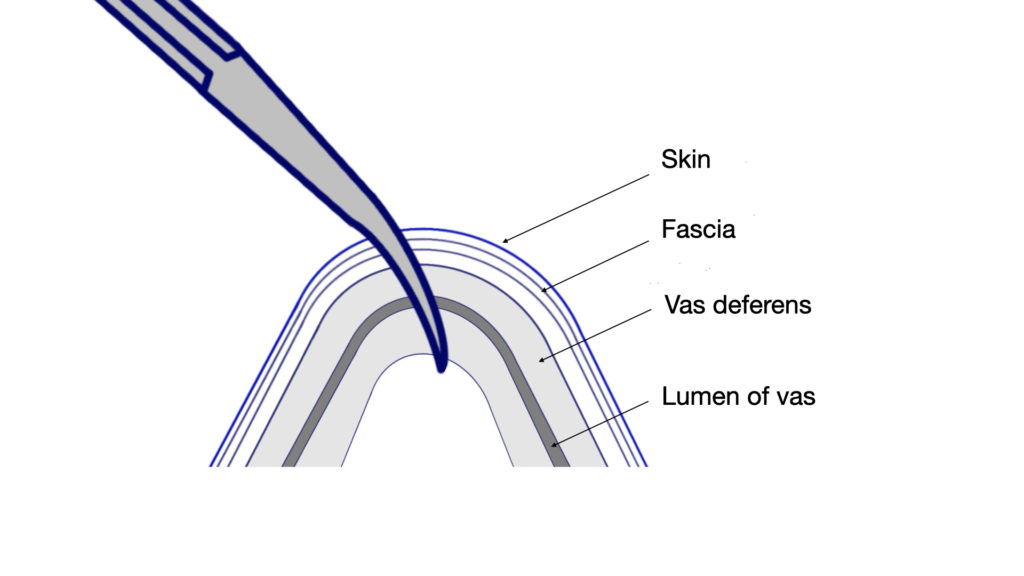
If you pierce the skin without piercing the vas, and then move more deeply, you will just skim along the vas without opening the fascia that is tightly adherent to the vas. This will make the delivery more difficult and the deep puncture will give you more problems with hemostasis.
